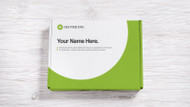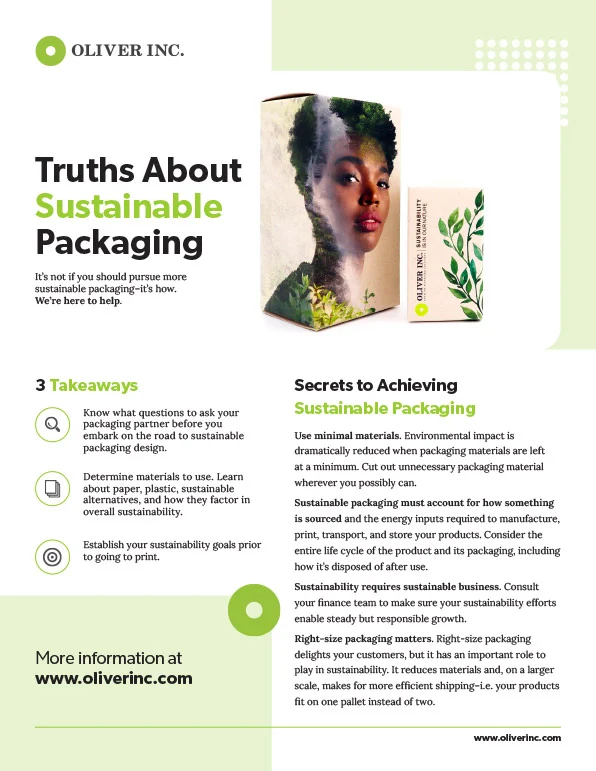How Can You Personalize Folding Cartons With Variable Data Printing?
Posted by Oliver Inc. on 25th May 2023
It’s no secret the internet has changed the way companies market to consumers. Businesses can curate content based on what you’ve already read or offer a product suggestion following a recent purchase. With a wealth of information provided through forms, purchases, cookies, and more, brands can personalize messages to match consumer preferences and behaviors.
Did you know that it's also possible to personalize messages with printed materials? Personalized messaging can be achieved through variable data printing. With digital printing technologies, companies can customize just about anything on marketing collateral or folding cartons—text, the background colors, even an image—in one print job.
The process involves uploading a spreadsheet to a digital printer (or cultivating data) and producing unique collateral based on the information provided. Businesses have utilized variable data printing, for instance, to send out printed mailers and order business cards. Once the information has been uploaded, the printing process becomes fully automated, unleashing an efficient new way for brands to foster consumer loyalty.
And as technologies improve, marketing and buying behaviors change, and companies invest in creative solutions, the possibilities for variable data printing increase.
Here’s what you need to know to better connect with your customers.
What Is Variable Data Printing?
Variations of variable data printed existed before digital methods emerged, but the process was far less efficient and more costly. It involved multiple manual steps—such as ink-jet printing on an offset postcard, for example—with limited range for customization. Put simply, a mailing address was usually the only thing that changed, because personalizing anything else would reduce the cost-effectiveness of a print run.
Digital variable data printing, on the other hand, is an inline, one-step process that allows for advanced customization. Traditionally, companies have focused their efforts on marketing collateral—from personalized printed mailers and newsletters to business cards—and communications such as invitations. When designed strategically, this can create powerful brand synergy between labels, secondary packaging, and printed marketing materials.
Variable data printing also makes doing limited edition printing for specific customers or segments much more cost effective, as well.
Regardless of the printed material, the goal is largely the same: The more personal you can get with the message, the better the response. That’s obviously a technique we’ve experienced online with pop-up ads, product suggestions, e-commerce, and email campaigns, and it’s difficult to match with traditional marketing efforts.
But with modern digital printing technologies, it can be done.
Modern Variable Data Printing
What can you do with variable data printing now?
What can’t you do?
The improvement in technologies has opened the possibilities for digital variable printing. Yes, the traditional applications still apply. After all, some companies still equip their employees with fresh business cards. They still send out mailers.
But there’s so much more they can personalize with the right marketers behind projects, the creativity to match, and a strong printing partner who can deliver a high-quality product.
Don’t overlook the benefits of integrating sustainable packaging principles into your variable data printing, either. Whether it’s sustainable paperboard for folding cartons, right-size packaging, localizing your supply chain, or implementing other green packaging materials into your design, sustainability is increasingly important to a growing number of eco-conscious consumers.
With innovative developments in digital technology, variable data printing can elevate the experience consumers have with your brand by employing wide-ranging customer data points, including age, gender, purchase history, address, income, and name. Throw in all the data made available through social media platforms, such as a person’s indicated interests, hobbies, liked pages, or which social media posts of yours they’ve interacted with, and the possibilities for personalization become nearly boundless.
Variable Data Printing & Packaging
Packaging, for example, can be customized with digital variable printing, and organizations have taken advantage of it to great effect.
Consider Sundays for Dogs, a company that produces healthy dog food. It sent out samples to more than 400 celebrities with custom packaging. Each featured the celebrity’s social media handle, a picture of their dog curated from social media, and a personalized brand label. Only it wasn’t customized for the celebrity. It was personalized for the dog: Sundays for Dogs became Sundays for Baxter, for example.
They’ve done the same for some of their earliest supporters. Here’s Food for Butz:
Amazing @sundaysfordogs pic.twitter.com/k2r8tH0d3d
— henrylmcnamara (@henrylmcnamara) February 3, 2020
The campaign was a big hit and generated buzz for Sundays for Dogs even though their actual brand name wasn’t prominently featured on the packaging. That’s a unique effect considering “brand” is everything in modern markets.
Then there’s mimicking digital ad techniques to boost sales. Large companies follow buyer behaviors just as they might online. If you’ve purchased certain products consistently (say, from a grocery store chain), they’ll send you personalized coupons for those products specifically, instead of generic catalogs.
While those examples are more complex, the age-old marketing methods have been updated, as well. Take printed mailers. Insurance companies can send out the same basic flier to all of their customers but alter the messaging based on the policies those customers have: Auto insurance customers would receive information on home or renter’s insurance, and vice versa.
If you know something as personal as your customer's birthday and favorite color, voilà, you can put a special offer in their mailbox just as they light the candles on their cake.
You could also send special, personalized kits to customers around the holidays. You name it.
The point is, variable data printing started out as an advancement in communication, but has grown since then. Coupled with imagination, it's now a powerful marketing technique that any company can employ to endear their brand to consumers.






